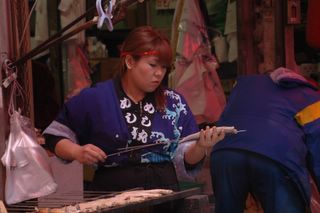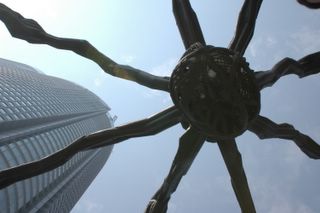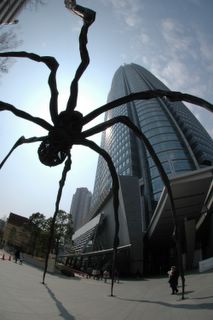
A wonderful tobi (鳶) flying high in the sky, over the beach of Kamakura (鎌倉)。
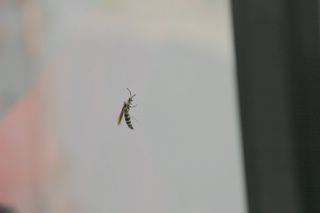
 The above picture (and the enlarged details on the right) were taken on the Enoden (江ノ電), a couple of stops before the Great Buddha (大仏).
The above picture (and the enlarged details on the right) were taken on the Enoden (江ノ電), a couple of stops before the Great Buddha (大仏). The Enoshima Electric Railway (江ノ島電鉄) or "Enoden" (江ノ電) as it is called by the area folk, serves Enoshima, a small island 50 kilometers from Tokyo. Opened in 1910, the 10 km interurban style tramway connects Enoshima with Fujisawa and Kamakura.
The Enoshima Electric Railway (江ノ島電鉄) or "Enoden" (江ノ電) as it is called by the area folk, serves Enoshima, a small island 50 kilometers from Tokyo. Opened in 1910, the 10 km interurban style tramway connects Enoshima with Fujisawa and Kamakura.

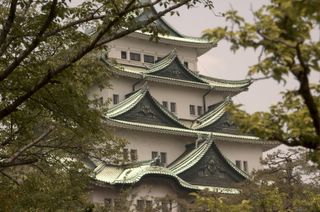
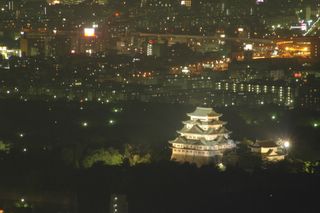



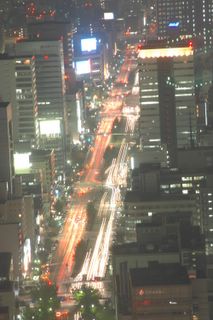

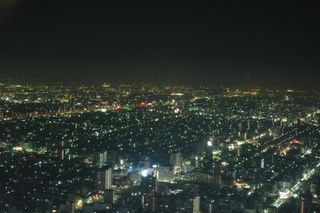

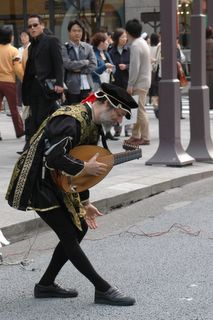
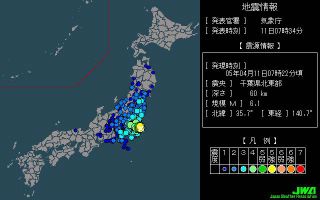
No tsunami tidal wave warning was issued for the 7:22 a.m. quake, which registered an intensity of upper 5 on the Japanese seismic scale of 7 in southern Ibaraki and northeastern Chiba prefectures.
The inland Kanto region was struck by a quake with an intensity of upper 5 or stronger for the first time since the current intensity scale was introduced in 1996.
Runways at Narita airport east of Tokyo were closed for about 15 minutes after the quake but no irregularities were found, airport officials said.
Railway services were suspended on part of the JR Sobu, Narita, Togane and Kashima lines.
About 180 passengers of a Choshi-bound Sobu Line train were crammed inside its six cars for about one hour as the train was stopped between Iikura and Yokaichiba stations after the quake. The passengers later left the train and walked alongside the railway toward Yokaichiba Station.
About 30 passengers have been inside a Kashima Line train for more than three hours as the four-car train stopped on a bridge after it departed Sawara Station.
Bullet train services were also suspended briefly on part of Tohoku, Joetsu and Nagano Shinkansen lines.
In Chiba Prefecture, the quake registered an upper-5 intensity in the towns of Omigawa and Hikata and the cities of Yokaichiba and Asahi. It also recorded an upper 5 in Kamisu, Ibaraki Prefecture.
It measured a lower-5 intensity in the towns of Tako and Nosaka and the city of Sawara, all in Chiba Prefecture.
At the city hall for Yokaichiba, nearly 10 windows were shattered or cracked, city officials said.
A Japan Meteorological Agency official said no aftershocks that might cause major damage are likely to occur.
The focus of the earthquake was 52 kilometers underground in northeastern Chiba Prefecture, the agency said.









 Tokugawa Ieyasu, the first Tokugawa shogun and builder of Edo as is now Tokyo, invited fishermen from Tsukudajima, Osaka and gave them a privilege for fishing in order to let them supply seafood to Edo Castle. The fishermen purveyed fish to the Castle and sold the remains near the Nihonbashi bridge. It was the origin of Uogashi.
Tokugawa Ieyasu, the first Tokugawa shogun and builder of Edo as is now Tokyo, invited fishermen from Tsukudajima, Osaka and gave them a privilege for fishing in order to let them supply seafood to Edo Castle. The fishermen purveyed fish to the Castle and sold the remains near the Nihonbashi bridge. It was the origin of Uogashi.
